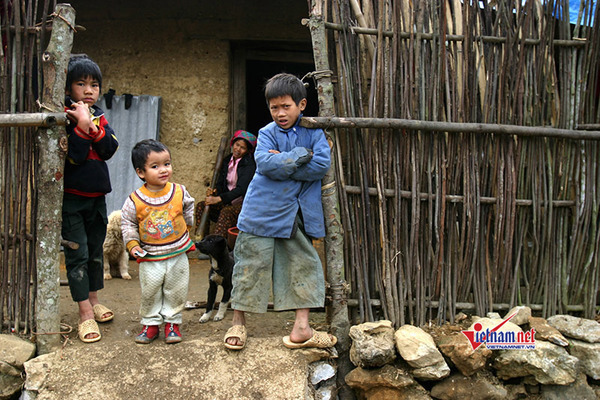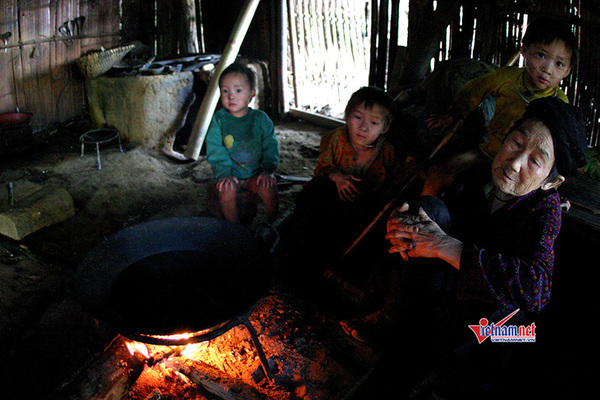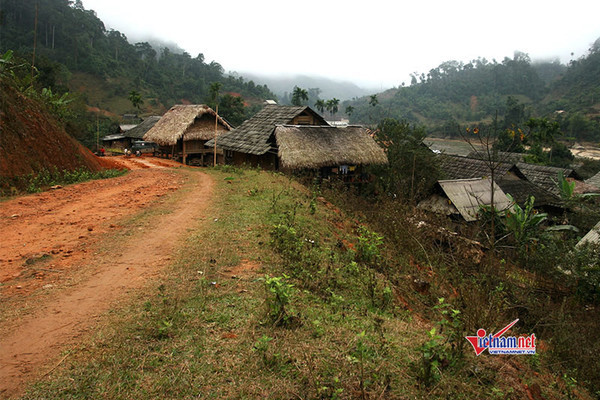 |
|
Hunger eradication and poverty reduction is one of seven national target programs of Vietnam. Photo: LAD
|
Therefore, hunger eradication and poverty reduction is one of seven national target programs with a special priority of the State of Vietnam.
If poverty is not solved, there is no goal set by the international community as well as the nation, such as economic growth, improvement of life, peace, stability, and guarantee of human rights that can be accomplished. The State of Vietnam considers the Hunger Eradication and Poverty Reduction Program as one of the seven national target programs and has given special human resources and material priorities to this program.
Undeniable achievements
The Communist Party of Vietnam (CPV) "attaches importance to taking care of happiness and comprehensive development of human beings, protects and guarantees the legitimate rights and interests of human beings, and respects and implements international human rights treaties that Vietnam has signed."
The participation of the whole political system with the spirit of "For the poor" has spread widely and deeply throughout the whole society, with practical content and forms. The work of hunger eradication and poverty alleviation in Vietnam has achieved great achievements of historical significance, which has been recognized by the world community.
At the United Nations Conference on 11/11/2006, Vietnam announced the achievement of the Millennium Development Goals (MDGS) on poverty reduction and reached the goal 10 years ahead of schedule (2015). Accordingly, in the period of 1993 - 2004, the rate of poor people decreased from 58.1% (1993) to 19.4% (2004).
In the period of 2011 - 2015, the proportion of the poor decreased from 14.2% (2010) to 4.25% (2016). According to the new standards, by 2017, the percentage of poor people reduced to 7% (down 1.3% compared to 2016); The average rate of poor households in poor districts decreased to below 40%; poor households in extremely difficult communes, coastal areas and islands, isolated communes of ethnic minority and mountainous areas decreased by 3% - 4% compared to 2016.
Vietnam eradicated hunger and reduced poverty for tens of millions of people, pushing back and eliminating hunger across the country. Vietnamese people not only have food, clothing and education, but also have good food, nice clothes; essential infrastructure for people is getting better and better.
 |
|
The rate of poverty among ethnic minorities continues to decline sharply and it is a very encouraging result of policy efforts focused on increasing income for ethnic minorities. Photo: LAD
|
In 2019, Vietnam will continue to strive to reduce the rate of poor households by 1 - 1.5% per year, the rate of poor districts and poor communes by 4% per year, and the proportion of poor ethnic minority households by 3% to 4% according to the multi-dimensional poverty line for the 2016-2020 period.
At the same time, it is necessary to improve livelihoods and improve the quality of life of the poor, ensuring that the income per capita of poor households nationwide will increase by 1.5 times by the end of 2020 compared to the end of 2015; particularly, revenue the earnings of poor households in poor districts, poor communes, disadvantaged villages and ethnic minority households will double.
Mr. Ousmane Dione, Country Director of the World Bank (WB) in Vietnam, said that Vietnam has achieved great results in reducing poverty and improving the quality of life for millions of people. The rate of poverty among ethnic minorities continues to decline sharply and it is a very encouraging result of policy efforts focused on increasing income for ethnic minorities.
Continuous innovation to improve efficiency
 |
|
With a solid political and legal basis, high political determination and synchronous implementation of solutions, Vietnam has achieved great achievements in poverty reduction, a solid guarantee for better human rights. Photo: LAD
|
Although programs and policies on hunger elimination and poverty reduction in Vietnam were effectively implemented and recognized by the world, those programs and policies have been continuously renewed to improve their effectiveness.
On November 19, 2015, a breakthrough change was made after the Prime Minister issued Decision 59/2015/QD-TTg on the multi-dimensional poverty lines applicable to the period 2016-2020. Accordingly, the old poverty line has been replaced by the new ones, with higher criteria.
At the same time, 10 indicators were identified to measure the level of deprivation of basic social services. These 10 indicators are used to determine the level of access shortages for 5 basic social services, including: healthcare, education, housing, clean water and sanitation, information.
The promulgation of new poverty lines and identification of bases for measurement; monitoring the level of income deprivation and access to basic social services of the people is the basis for the implementation of sustainable poverty reduction and social security policies, multi-dimensional poverty reduction, as well as planning other socio-economic policies in the period of 2016-2020.
There have been fundamental changes in hunger eradication and poverty reduction. In order to improve the effectiveness of the policy, the Government has combined all the hunger eradication and poverty alleviation programs into one – the "National Target Program on Sustainable Poverty Reduction in 2016-2020" (Under Decision 1722-QD/TTg, dated September 2, 2016 of the Prime Minister) – which is under the only one management agency - the Ministry of Labor, War Invalids and Social Affairs.
The program includes 5 component projects: Program 30a (rapid and sustainable poverty reduction for poor districts); Program 135 (Program on socio-economic development for extremely difficult communes, the areas of ethnic minority and mountainous areas); the program on support for production development, livelihood diversification and replication of poverty reduction models in the communes not included in Program 30a and Program 135; Communication and poverty reduction on information; Capacity building, monitoring and evaluation of program implementation.
The Government of Vietnam has set the National Target Program on Sustainable Poverty Reduction in the period of 2016-2020, with a capital of VND41,449 billion (VND14,584 billion was assigned to the program in the two years of 2016-2017). In addition, the State has allocated VND44,214 billion to implement the regular poverty reduction policy, supporting the poor in terms of healthcare, education, housing and credit.
Provinces in the country mobilized more than VND7,303 billion, of which, over VND5,560 billion was spent on social security and poverty reduction in 2016 and 2017. Programs such as building a new countryside, lending to poor households for livelihood and others have helped develop infrastructure in rural areas where people gradually have sustainable livelihoods.
With a solid political and legal basis, high political determination and synchronous implementation of solutions, Vietnam has achieved great achievements in poverty reduction, a solid guarantee for better human rights. It also confirms the good nature of socialist society that Vietnam is always striving towards. That is the basis to reject all false and misrepresented statements about ensuring human rights in Vietnam.
Minh Van
 Helping poor households with sustainable livelihoods is a living testament to human rights.
Helping poor households with sustainable livelihoods is a living testament to human rights.